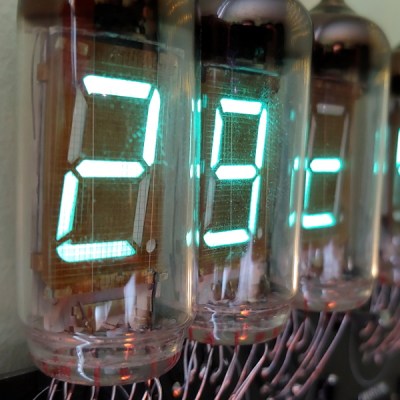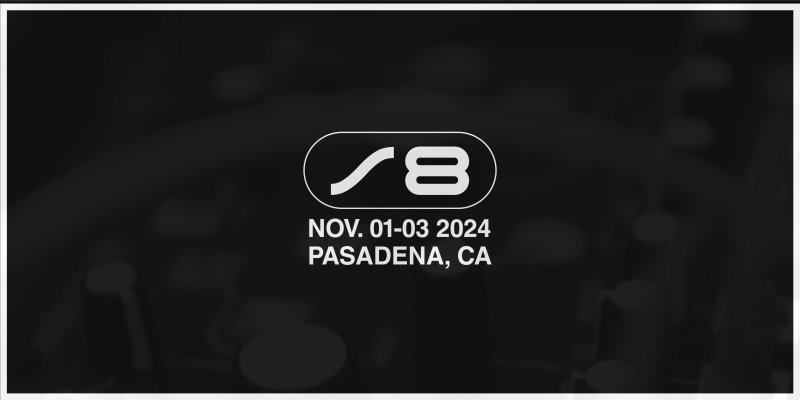If there’s a constant in the world of electronics, it’s change. Advancements and breakthroughs mean that what was once state-of-the-art all too soon finds itself collecting dust. But there are exceptions. Perhaps because they’re so much more visible to us than other types of components, many styles of displays have managed to carve out their own niche and stick around. Even for the display types that we no longer see used in consumer hardware, their unique aesthetic qualities often live on in media, art, and design.
 This year, to coincide with Hackaday Supercon, the folks at Supplyframe’s DesignLab want to pay tribute to display technology past and present with a special exhibit — and they need your help to make it possible. If you have a display you’d like to show off, fill out this form and tell them what you’ve got. Just be sure to do it by September 16th.
This year, to coincide with Hackaday Supercon, the folks at Supplyframe’s DesignLab want to pay tribute to display technology past and present with a special exhibit — and they need your help to make it possible. If you have a display you’d like to show off, fill out this form and tell them what you’ve got. Just be sure to do it by September 16th.
For the larger specimens, it would be ideal if you’re somewhat local to Southern California, but otherwise, they’re looking for submissions from all over the world. The exhibit will open on the first day of Supercon and run throughout November.
Don’t worry. They’re only looking to raid your parts bin temporarily. Any hardware sent in to be part of the exhibit will be considered on loan, and they’ll make sure it gets back to where it belongs by January 31st, 2025. The goal is to show the displays on and operational, so in most cases, that’s going to mean sending over a complete device. But if it’s possible to isolate the display itself and still demonstrate what it would look like in operation, sending along just the bare display is an option.
Of course, there are examples where the display itself is so fundamental as to be inseparable; what would the Sharp EL-8 have been without that gorgeous vacuum fluorescent display (VFD)? In that case, please don’t tear apart some classic device on our account. Just explain what the device is, and the DesignLab will see if they can make the appropriate accommodations.
Looking for some inspiration? Here’s just a few of the different display types the DesignLab is looking for, in no particular order:
- Nixie Tubes
- Vacuum Fluorescent Displays (VFDs)
- Plasma Displays
- Color/B&W Cathode-Ray Tubes (CRTs)
- Round Displays
- Numitrons
- Dekatrons
- Color/Grayscale ePaper/eInk
- Alphanumeric Segmented LEDs
- Non-English Segmented LEDs
- Flip-Disc/Flip-Dot
- Refreshable Braille Displays
- Volumetric Displays
- Displays with Unusual Fonts
Keep in mind that the display doesn’t need to be commercially produced either. If you’ve built a custom display that uses any of these core technologies (such as a homebrew segmented LED display), we’d love to see it.
Spread the Word!
If you’re reading Hackaday, there’s an excellent chance you’ve got some cool hardware buried in your closet or stuffed in a drawer somewhere that’s been waiting for a moment like this to shine again. But even if you don’t, we bet you know somebody who does, so please share the submission form with any individuals or groups you think might be interested.
With the community’s help, this exhibit promises to be a fascinating addition to Hackaday Supercon.



















One display I didn’t see in the suggestions was the phosphorus painted wall clock that would be updated as the display fades. IIRC, Hackaday featured such a display years ago.
(No I don’t have one to send)
One display technology I don’t know what it is, is what you often found in the 1990’s (and probably earlier) in process demonstation boards, where the flow of something through a plant was described. Usually, a “pipe” was made up of discrete segments that slowly lit up and faded again, in order as to show a flow through the pipe (but I’ve seen them used showing electricity and bulk materials as well),
The “segments” of these displays had a very “grown crystals” feel to them.
I suppose it was as simple as differently polarized segments and a light source with fiber optics to each segment and a polarized, slowly rotating wheel between the light source and the fiber optic entry point.
I have seen it in multiple places, I can remember both the cleaning of water in a seal sanctuary, a power distribution scenario at a wind farm and a demonstration of a blast furnace in a science museum.
I have no idea of a name for these displays, and I can’t find them on google. I haven’t seen one of those in decades.
Just hijacking the comment section to hope anyone knows – it seems fitting for the topic!
You mean like where something gets animated by a light source with a polarizer rotating in front of it? Your thing to be animated would have strips of polarizer cut at different angles and arranged sequentially.
I think so. But the viewing side all had a very characteristic “grown crystals” feel. Is there a (trade) name of this system you know of?